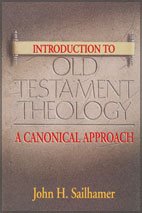I used to love to preach from the OT...before life got more complicated and I realized Gideon really wasn't a hero, realized I was ignoring authorial intent, and realized my sermon would preach at any modern synagogue without offending anybody because I was preaching as if the cross had never happened. Needless to say I still WANT to preach from the OT. So I’ve started reading Graeme Goldsworthy’s Preaching the Whole Bible as Christian Scripture. I’m still near the beginning but I think I see four general methods of preaching the OT. And just for fun I’ll use the story of David and Goliath as my template.
1. Role-Model Preaching
This is the easiest way to preach from the OT. It is also the worst method.
Basic Method/Question: Be like X, don’t be like Y.
David was brave. Be like David. Saul was scared. Don’t be like Saul. What giants are in your life that you need to knock down?
Summary:
To be fair, NT authors do use OT characters as models for us to follow or to avoid. There is obviously a place for that. Using an OT individual as an example, however, is a far cry from building an entire sermon around it. Children’s curricula are the worst offenders here. Many of them consistently forget that God is the hero of every story.
It’s a bad method, period. It ignores the authorial intent of the OT narrative, can function without any referent to the text itself (since we all know the stories), ignores the real hero—God, and basically preaches law ignoring the gospel (you don’t need the gospel to follow a role model).
2. "Lessons about God" Preaching
This one is much better than the first because it focuses on God rather than man.
Basic Method/Question: What does this story teach us about God?
God was jealous for the honor of His name that Goliath had profaned. God gave David the victory. God was faithful and kind to David because David cared about what God cared about.
Summary:
This has been my MO in preaching from the OT in the past. It’s ok because if your audience walks away knowing something about God that they didn’t know before that’s a good thing. And they know that God is the hero, no man. However, there are two glaring problems with this method. First, even though the Bible does tell us about God, it does more than that. Second, this method ignores the cross. I could preach this sermon in a synagogue and not get kicked out. That’s a problem since the apostles got kicked out when they preached in synagogues.
3. True Authorial Intent Preaching
This one was paradigm shifting for me. This method recognizes that the OT was not just written as simple record of the history of Israel. The OT is commentary on that history. It has a theological spin—a divinely ordained agenda. What happened is important, but not nearly as important as what the biblical author said what had happened. The locus of revelation is not in the event itself but in the divinely inspired account of what happened. And that account is far from “objective.” The authors have a theological agenda. It is the exegete’s responsibility to figure out that agenda and preach that agenda since that is what is inspired, not the event itself. The breakthrough as against the former two methods is that the preacher is not free to draw any conclusion he wants to from the event. The conclusions and applications have already been drawn by the author. It is the preacher’s responsibility to preach those conclusions, not come up with his own spin on the event.
Basic Method/Question: Why did the author include this event and what theological point is he trying to make?
The author’s overall intent is to defend the house of David against claims that he took the throne in a dishonest way. In this passage he is showing God’s blessing on David through military success in the face of a failing and impotent army under Saul.
Summary:
I’m still working on wrapping my brain around this method. This one actually does justice to the Text rather than using the Text as a springboard to preach what you want. Possibly the biggest drawback is that, again, I would not get kicked out of a synagogue for preaching what the human author was intending when he wrote it. I still need to read John Sailhamer’s Introduction to OT Theology and Gordon McConville’s Grace in the End to see if the author's intent could have included Calvary.
4. Biblical Theological Preaching
This is the method proposed in the book I am currently reading. Basically, every OT Text can lead to Christ. Christ claims the OT was written about Him. Every OT passage fits in to the grand History of Redemption.
Basic Method/Question: How does this passage fit into the History of Redemption and lead to Christ?
This story is the coming out party of David who would become king. God promised David that this kingdom would culminate in the great Davidic King Himself—Jesus Christ.
Summary:
It certainly preaches Christ and looks like it does so in an ethical manner. More on this when I finish the book!
Subscribe to:
Post Comments (Atom)




3 comments:
Hey Bob,
Great summary. It seems like you've explained the methods very clearly. I especially like recalling the authorial intent awakening we all received. I look forward to more from you on this topic.
Oh and one more thing...David had a coming out party....huh? :)
Yeah, I'm with Tim. I'm not sure that David's "coming out party" was the best word choice! :)
Nice post, though. It brings up scary memories of the "role model" preaching many of us grew up with. Thankfully, though, it also brings up many of the wonderful memories of preaching I never knew existed but have heard much of recently. Praise the Lord for a Christ-centered biblical theological approach to preaching the OT. Keep it up, Bob!
The locus of revelation is not in the event itself but in the divinely inspired account of what happened.
This is good. You spoke of a paradigm shift, reading Sailhamer will do that for you!
Post a Comment